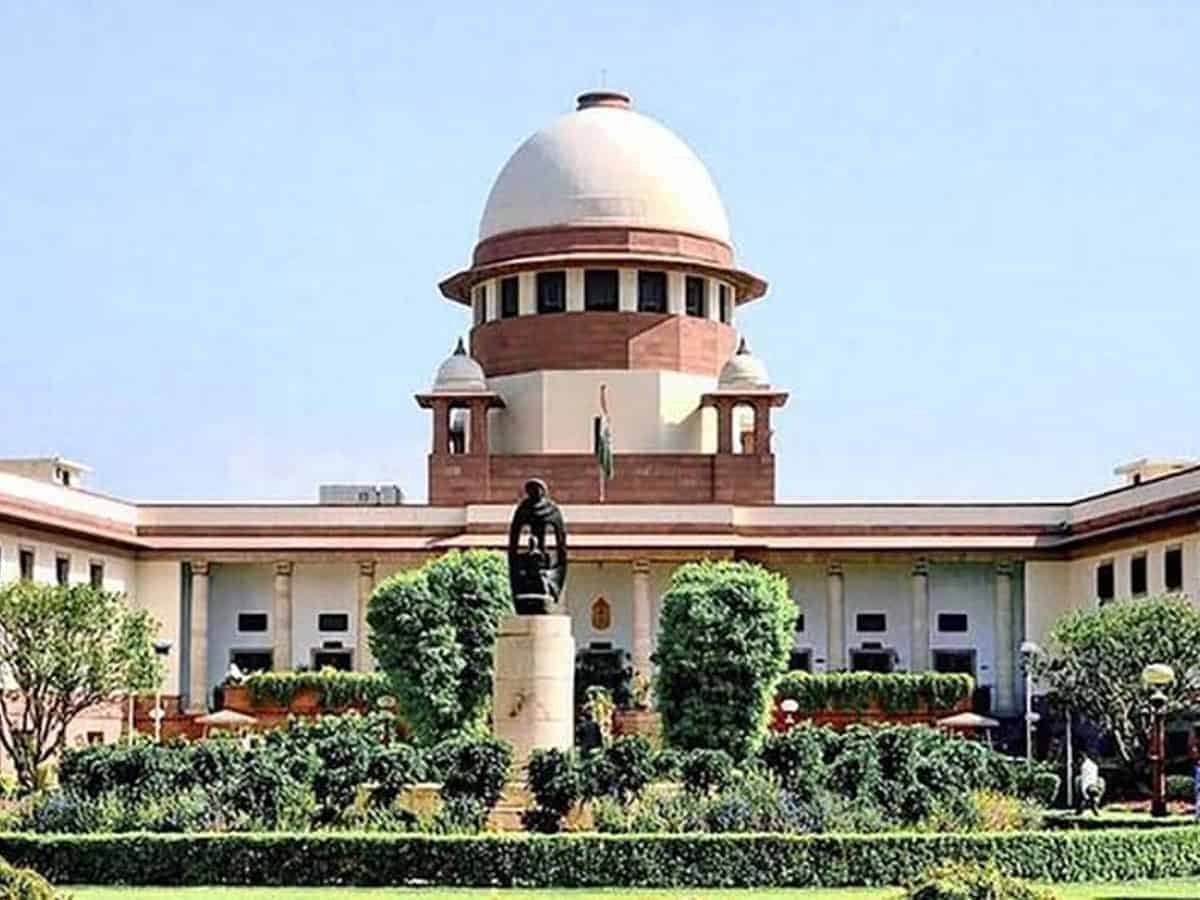
New Delhi: Dealing with the festering dispute over Aligarh Muslim University’s minority status, the Supreme Court said on Tuesday it will examine whether the “denominational character” of the institution got lost when it was designated as a university under the 1920 AMU Act.
Does the Aligarh Muslim University (AMU) Act, 1920 have the consequence of abrogating its status as an institute governed by a religious minority, a seven-judge constitution bench headed by Chief Justice D Y Chandrachud asked.
The apex court observed the mere fact that it was accorded the status of a university does not amount to surrender of its minority status.
“What are the indicia (signs of the varsity having lost its minority status)? Later on we will again look at it to indicate that when it was conferred with the university status, that it surrendered its minority status. The mere fact that it was given university status does not amount to a surrender of the minority status,” observed the bench, also comprising Justices Sanjiv Khanna, Surya Kant, JB Pardiwala, Dipankar Datta, Manoj Misra and Satish Chandra Sharma.
“We have to independently see whether by the 1920 Act the denominational character of AMU was lost,” the CJI said during the fourth day of arguments.
The bench said it was a well settled principle that an institution does not have to give up its minority status when it seeks aid.
“Because today there is a recognition that without aid no institution, minority or non-minority, can exist. Merely by seeking aid or being granted aid you don’t lose your right to claim your minority status. That is now very well settled,” the court said.
During the day-long hearing, Justice Chandrachud asked Solicitor General Tushar Mehta, who was representing the Centre, about the status of AMU under the 1920 legislation and on the eve of the adoption of the Constitution.
“What happened between 1920 and January 25, 1950?” the CJI asked.
Mehta responded, “My immediate answer is, between 1920 and the Constitution coming into force, there is no change in the Act. 1920 (Act) remains as it is. The first amendment comes in 1951.”
The 1920 Act speaks about incorporating a teaching and residential Muslim university in Aligarh. In 1951, the AMU Act was amended to do away with the compulsory religious education provided to Muslim students by the university.
The bench asked the government’s law officer, “Is the 1920 legislation also consistent with recognising the pre-existing history of AMU… or does the 1920 Act itself results in the abrogation of any claim to minority status?”
Mehta, while referring to his written submissions, said at the time of its inception in 1920 the university had a predominantly national and non-minority character.
“In fact, the minority element was only present as an exception or a carve-out as opposed to the omnipresent non-minority character,” he said, while referring to various provisions of the 1920 Act.
The bench also heard the submissions of Attorney General R Venkataramani during the day.
“In my understanding, this is not a case which has emanated from deprivation of Article 30 right,” he said.
Article 30 of the Constitution deals with the right of minorities to establish and administer educational institutions.
“The right under Article 30 in certain areas, as our law has evolved, may well be conditional or contingent upon provision of a regulatory statute,” the bench said.
It said there can be no manner of doubt that the exercise of the right under Article 30 is contingent on compliance with regulatory provisions.
“Those regulatory provisions ensure that the true character of an institution as an institution of excellence, as our court has said repeatedly, is maintained. Second, that even minority institutions do not fall below the national standards,” it said.
It, however, wanted to know if the right to establish an institution is contingent on recognition by an enabling statute.
During the day-long arguments, the bench also heard advocate M R Shamshad, who spoke in favour of AMU’s minority status.
“My question is can an institution say that when I establish a university, you must necessarily recognise my right to confer degrees without the provision of an enabling statute,” the CJI asked.
Responding to the query, Shamshad said, “No. There are regulatory provisions.”
At the fag end of the day’s proceedings, the bench asked Mehta whether he had any material on record to show what was the recurring expenditure incurred by the university from 1920 to 1950 and who funded those.
Mehta said the expenditure was borne by the government and it currently stood at Rs 1,500 crore annually.
The arguments remained inconclusive and would continue on Wednesday.
AMU’s minority status has been caught in a legal maze for the last several decades.
The top court had on February 12, 2019 referred to a seven-judge bench the hugely contentious issue for adjudication. A similar reference was made earlier.
A five-judge constitution bench had in the S Azeez Basha versus Union of India case in 1967 held that since Aligarh Muslim University was a central university, it cannot be considered a minority institution.
However, it got back its minority status when Parliament passed the AMU (Amendment) Act in 1981.
In January 2006, the Allahabad High Court struck down the provision of the 1981 law by which the university was accorded a minority status.
The Congress-led UPA government at the Centre moved in appeal against the high court order. The university also filed a separate petition against it.
The NDA government spearheaded by the BJP told the Supreme Court in 2016 that it will withdraw the appeal filed by the erstwhile UPA dispensation.

